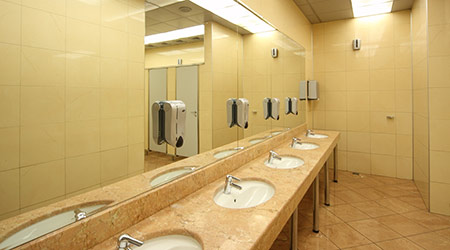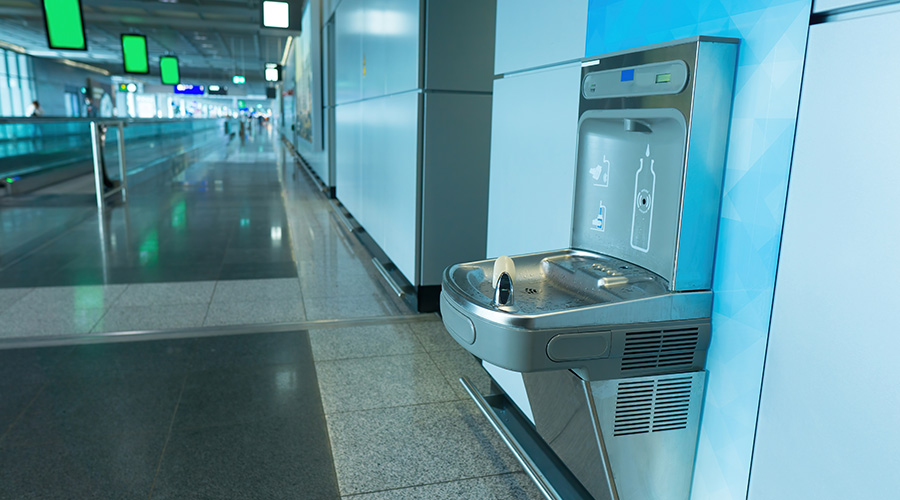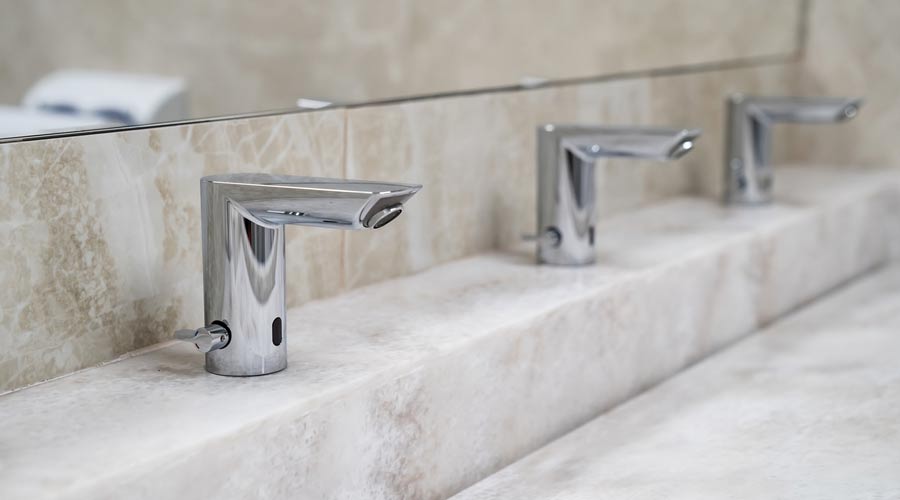Water Conservation and Restroom Design
Part 3 of a 4-part article on understanding legal and regulatory issues in restroom retrofits and new designs
Along with the accessibility and compliance concerns that are related to restroom design, facility managers also must consider water conservation, the economics of water use, and the requirements of green building codes and standards.
The Circle of Blue reports that the price of water in 30 major U.S. cities has risen 41 percent since 2010, according to Bill Hoffman, president of H.W. (Bill) Hoffman and Associates.
On average, domestic/restroom use accounts for 37 percent of water used in offices, 35 percent in hospitals, 31 percent in restaurants and 30 percent in hotels, according to EPA’s WaterSense.
Major national green building codes and standards are embracing WaterSense efficiency provisions, including 1.28 gallon per flush (gpf) toilets, 0.5 gpf urinals, and 0.5 gallons per minute (gpm) faucets. Waterless urinals also are permitted under ASHRAE standards, the International Code Council’s (ICC) Green Code, and the International Association of Plumbing and Mechanical Officials’ (IAPMO) Green Plumbing and Mechanical Code Supplement.
Toilets. Many facility managers recall the flushing problems associated with 1.6 gpf toilets when they first came out in the 1990s. EPA’s WaterSense program addresses this problem for more than 2,000 1.28 gpf models, all of which have passed a maximum performance test to prove the fixtures flush properly.
“All must pass 350 grams of simulated human waste, well above normal use conditions,” points out Hoffman.
Urinals. New flushing urinals use just 0.5 gpf, making them far more efficient than older models. One quart and one pint per flush urinals also are available. Plumbing codes and standards also allow waterless urinals, provided they comply with American Society of Mechanical Engineers or IAPMO standards.
“Both major plumbing codes recommend that when non-water urinals are installed, they should have a water distribution line roughed-in to the urinal location at a height not less than 56 inches above the finished floor,” explains Hoffman. Hoffman recommends installing the water distribution line, along with a shut-off valve located as close as possible to the distributing main water line. This allows for installation of an approved backflow prevention device, when urinals are retrofitted or replaced later. Also, at least one drainage fixture unit, such as a lavatory or other flushing fixture, needs to be installed upstream on the same drain line to allow drain line flow and rinsing.
When considering which urinal type to consider, Hoffman reminds facility managers that waterless urinals do get drain line buildup, which requires extra maintenance to clear. Their replaceable cartridges have a physical life, so must be replaced periodically; those cartridges can be costly. However, they do save water.
Diaphragms vs. O-rings. Flushing toilets and urinals often rely on diaphragms or piston valves with O-rings. As diaphragms age they often do not close as quickly, so regular maintenance is crucial. Piston valves use O-rings that also need maintenance attention.
The potential problem with flushometer diaphragms is that they are interchangeable. So a urinal diaphragm flushing at 5.0 gpf will fit in a urinal designed to flush at 0.5 gpf. Hoffman has encountered many 1.28 or 1.6 flushometer diaphragms that have been mistakenly replaced with 3.5 or 5.0 gpf diaphragms, “turning a 1.28 gpf toilet into a water waster.” For tank-type toilets, installing the wrong flapper valve can produce the same water wasting result.
Hoffman notes that piston valves generally are not interchangeable, making this mistake less likely. “The major take-away of this is to always use the correct parts for that specific model and type,” he stresses.
Related Topics:















